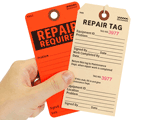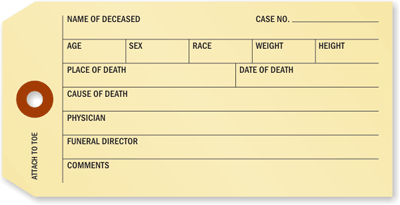Needless to say,
toe tags are one time-tested method of decedent identification and the prevention of posthumous changelings, documenting name, vital stats, and items like case numbers in the event of a police investigation. We’ve heard of some places using wrist bands for the same purpose, but it seems a little disrespectful to deploy the same techniques used by blues festivals and beer gardens. Toe tags cost pennies and provide ready information to help even the busiest, most disorganized medical examiner locate and identify the correct remains.













